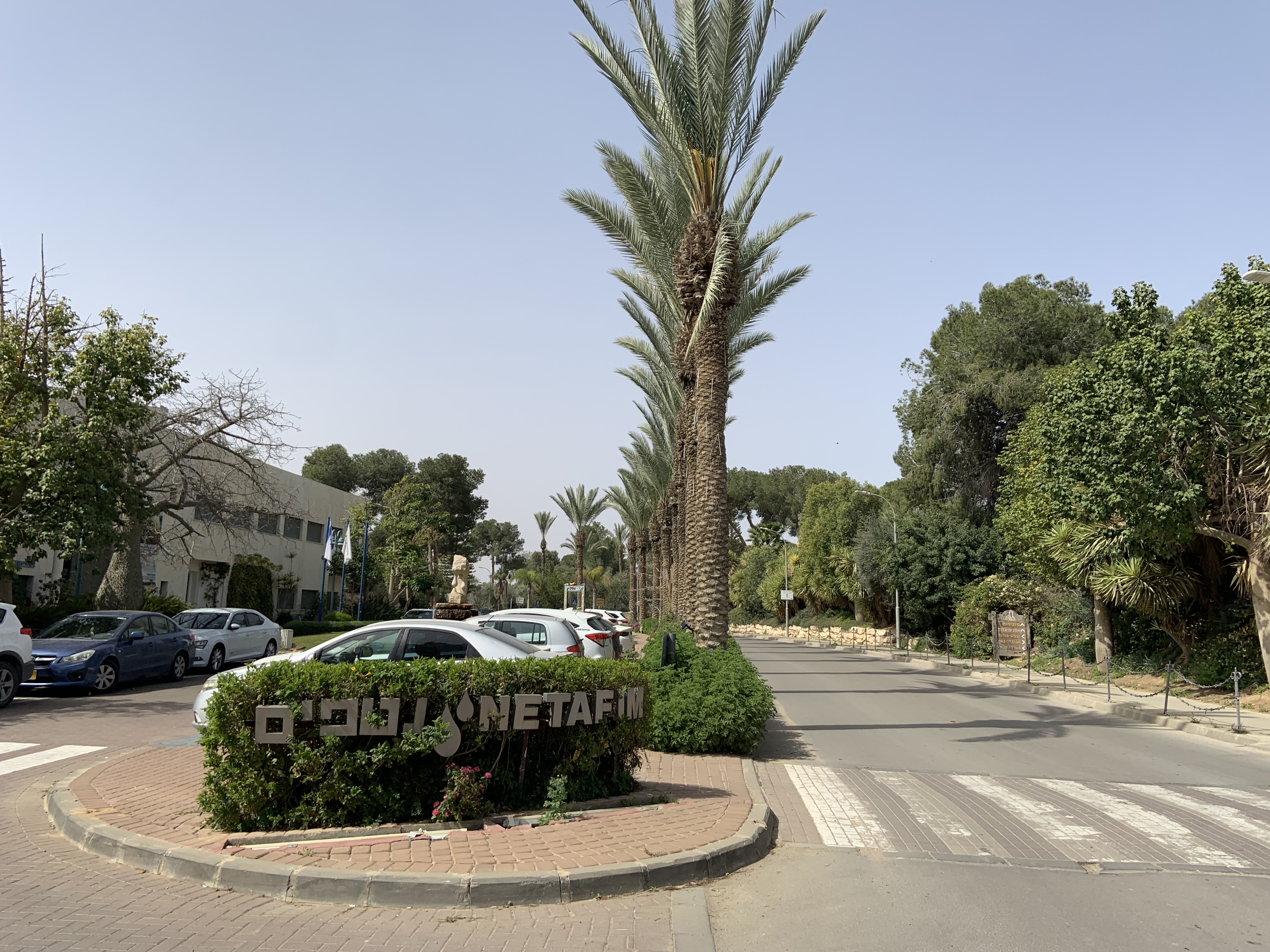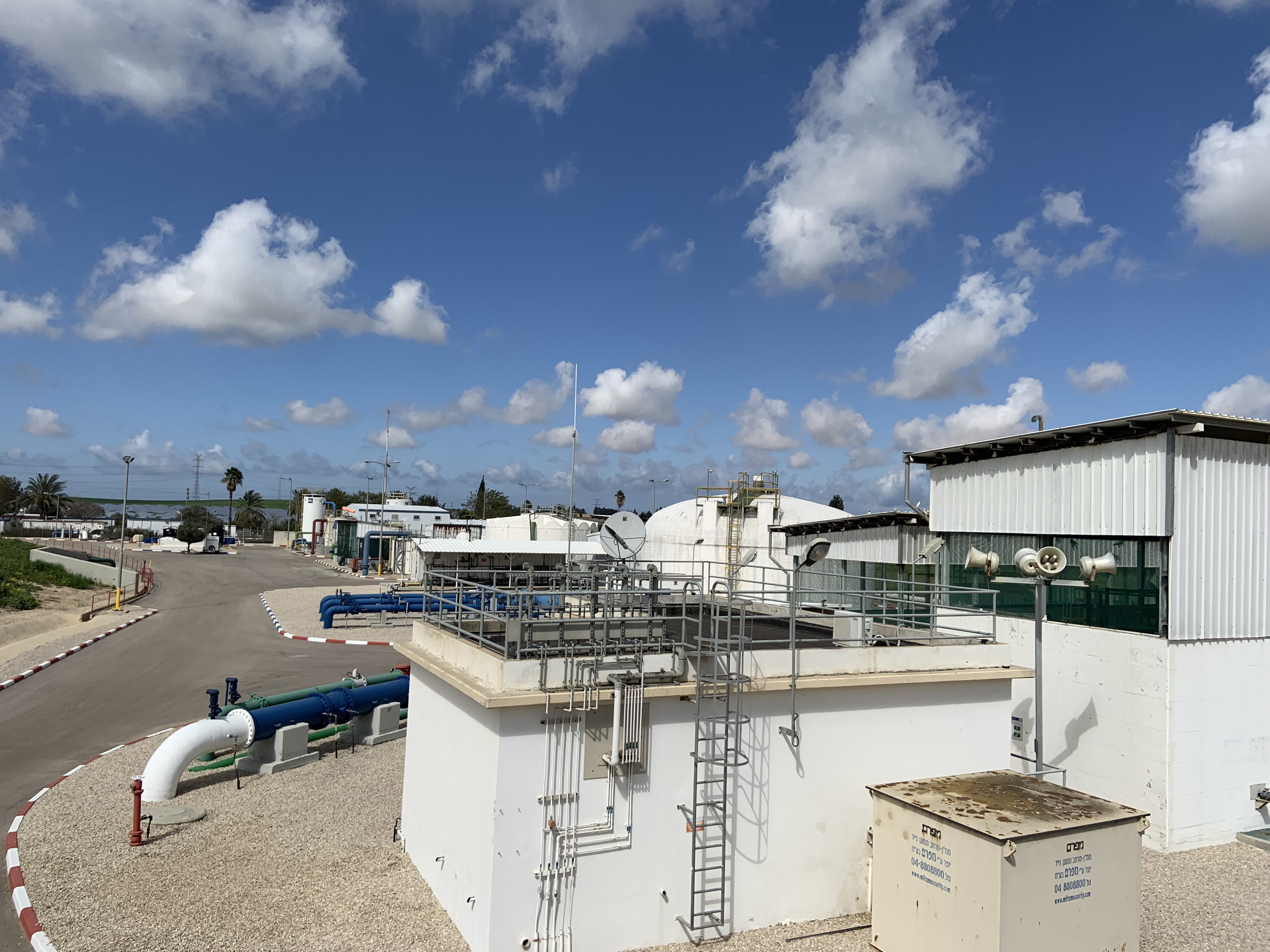by Alan Shapiro, Director, waterNEXT
It’s not every day I find myself halfway around the world, driving through the desert that spans much of southern Israel. As Director of waterNEXT, Canada’s water technology network, I’m here for a rare opportunity to see some of the technologies that have made Israel a global leader in water innovation.
First Stop: Irrigation

My first stop is Netafim, the world’s largest drip irrigation technology company. Its headquarters are located on a kibbutz (community settlement) in south-central
Israel, near the city of Beersheba. Just decades earlier, this now irrigated landscape was desert. Now, the winding road unexpectedly gives way to palm trees, flowers, and crops. It’s a testament to the power of drip irrigation.
Drip irrigation delivers water and nutrients directly to plant roots, optimizing the amount and timing of water release to support plant growth while conserving water and minimizing fertilizer use.
My guide tours me through Netafim’s operations, sharing the company’s history from humble farming roots to global irrigation leader. We walk through the state-of-the-art production facility where drip irrigation systems are manufactured, assembled, and shipped around the world.
Netafim’s mission is to “grow more with less,” which applies not only to their technology but also to their sustainability and food security initiatives. As a company, this has included:
- Reducing their greenhouse emissions gas per ton of raw materials by 26% since 2013
- Recycling more than 25,300 tonnes of used plastic irrigation lines since 2010
- Facilitating micro-financing and capacity-building to help farmers worldwide grow more food through better farming methods
Second Stop: Desalination

During reverse osmosis, salt water is forced through membranes whose microscopic pores allow water to pass through, but leave the larger salt molecules behind. Granot is one of Israel’s two brackish water desalination plants, treating groundwater from Israel’s naturally salty mountain aquifer to supply irrigation water for the surrounding region.
Walking through the Granot facility, I’m struck by how clean and quiet it is. Rows and rows of membrane filters quietly collaborate to make fresh water while the surrounding agricultural fields put it to good use.
Third Stop: Back to Canada
On my way home, I flew over much of Canada, from Newfoundland to British Columbia. While landscapes vary from province to province, the presence of water is constant, from lakes to glaciers. Much of this water is non-renewable, a remnant of glacial melt at the end of the last ice age. Drain our lakes and some of them would never return, while others would take centuries to replenish. Melt our glaciers, and the tap for many of our rivers is shut off.
Current water crises in many parts of the world, including nearby California, demonstrate how just a few years of declining rainfall takes a region from water abundance and scarcity. Speak to Canadians in regions such as interior British Columbia or southern Alberta, and they will remind you that drought is a very real challenge in our own backyard.
Both Netafim and Granot are testaments to the value that Israel places on water, both in terms of political and financial capital. Large-scale projects, whether for municipal, agricultural, or industrial use, require political will and long-term investment.
In regions like Israel where a high cost is placed on water, technologies like drip irrigation are self-evident and abundant. Whereas in countries like Canada, where water policies promote inefficient use of water, investments in water efficiency and conservation are less economical and typically underdeveloped.
Coming from a water-abundant country like Canada, it’s one thing to understand water scarcity in theory, but quite another to experience it in person. For me, my trip to Israel served as a reminder of what’s possible when we invest in water technology and infrastructure, and how much work we have left to do on water in Canada.
For more insights and updates on water innovation in Canada, subscribe to the waterNEXT newsletter.



